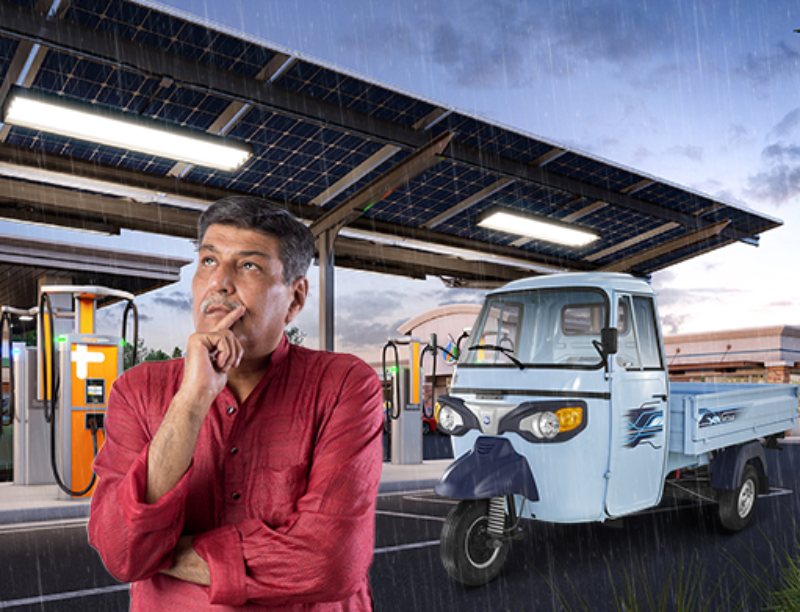Electric auto-rickshaws are becoming increasingly popular in many parts of the world as an environmentally-friendly and cost-effective mode of transportation.However, there are many myths surrounding electric auto-rickshaws that may discourage people from making the switch from traditional gasoline-powered auto-rickshaws. In this blog, we will debunk the top most common electric auto-rickshaw myths to provide accurate information about this innovative and sustainable mode of transportation. By doing so, we hope to encourage more people to consider switching to electric auto-rickshaws and contribute to a cleaner and more sustainable future.

The Myths and Realities of Electric Auto-Rickshaws
Debunk the myths and learn about the realities of Electric Auto-Rickshaws given below:
Myth: Electric auto-rickshaws have a short lifespan compared to their gasoline counterparts.
Reality: Electric auto-rickshaws or electric load vehicles have fewer moving parts, meaning there is less wear and tear and lower maintenance costs, allowing them to have a longer lifespan.
Myth: Electric auto-rickshaws are not as powerful as their gasoline counterparts.
Reality: Electric auto-rickshaws may have less horsepower, but they have more torque, allowing them to climb steep hills and accelerate faster.
Myth: Electric auto-rickshaws are too expensive to purchase.
Reality: While electric auto-rickshaws may have a higher upfront cost, they have lower maintenance and fuel costs, making them more affordable in the long run.
Myth: Electric auto-rickshaws have a short driving range and need frequent charging.
Reality: Modern electric auto-rickshaws have a driving range of up to 100 kilometers or more, making them suitable for daily use. With charging infrastructure becoming more accessible, frequent charging is not a significant concern.
Myth: Electric auto-rickshaws are not safe.
Reality: Electric auto-rickshaws undergo the same safety standards and regulations as gasoline-powered auto-rickshaws, and their battery technology has become increasingly safer.
Myth: Electric auto-rickshaws are slow and cannot keep up with traffic.
Reality: While electric autos may not have the same top speed as gasoline-powered auto-rickshaws, they are designed for city driving, with quick acceleration and maneuverability in tight spaces.
Myth: Electric auto-rickshaws are not environmentally friendly because of the carbon footprint associated with electricity generation.
Reality: While electricity generation does produce carbon emissions, electric auto-rickshaws have a significantly lower carbon footprint than gasoline-powered auto-rickshaws, even when taking into account the emissions associated with electricity generation.
Myth: Electric auto-rickshaws cannot be driven in the rain or snow.
Reality: Electric auto-rickshaws are designed to be weather-resistant and can be driven in all weather conditions.
Myth: Electric auto-rickshaws require specialized charging equipment and cannot be charged at home.
Reality: Electric auto-rickshaws can be charged using a standard wall outlet, and while specialized charging equipment may be faster, it is not required.
Myth: Electric auto-rickshaws are not as reliable as their gasoline counterparts.
Reality: Electric auto-rickshaws have fewer moving parts and a simpler design, making them less prone to breakdowns and easier to maintain, leading to higher reliability.
Myth: Electric auto-rickshaws have a limited lifespan for their batteries.
Reality: Modern electric auto-rickshaw batteries have a lifespan of several years and can be recycled or repurposed once they are no longer suitable for use in vehicles.
Myth: Electric auto-rickshaws cannot handle heavy loads.
Reality: Electric auto-rickshaws can carry the same weight as gasoline-powered auto-rickshaws, and some models can even carry heavier loads due to their higher torque.
Myth: Electric auto-rickshaws are not suitable for long-distance travel.
Reality: While electric auto-rickshaws may not be suitable for long-distance travel due to their limited driving range, they are designed for city driving and short-distance trips, making them ideal for urban commuters.
Myth: Electric auto-rickshaws are difficult to repair and maintain.
Reality: Electric auto-rickshaws have a simpler design than gasoline-powered auto-rickshaws, making them easier to repair and maintain. Additionally, electric auto-rickshaws have fewer parts that need regular maintenance, reducing maintenance costs.
Myth: Electric auto-rickshaws are not as comfortable as their gasoline counterparts.
Reality: Electric auto-rickshaws can be designed with comfortable seating, air conditioning, and other amenities to provide a comfortable ride for passengers.
Myth: Electric auto-rickshaws are not as fast as their gasoline counterparts.
Reality: Electric auto-rickshaws may not have the same top speed as gasoline-powered auto-rickshaws, but they can still reach speeds of up to 50 km/h, which is sufficient for urban driving.
Myth: Electric auto-rickshaws are not as aesthetically pleasing as their gasoline counterparts.
Reality: Electric auto-rickshaws come in a variety of designs and can be customized to suit individual preferences, including color, graphics, and other visual features.
Summary
Concluding Lines
In conclusion, myths or incorrect information frequently forms the basis of assumptions related to electric auto-rickshaws. We wish to help more people to think about converting to electric auto-rickshaws by debunking these myths and offering correct facts. Electric auto-rickshaws are a great choice for anybody searching for a more environmentally friendly method of transportation because of its many advantages, such as cheaper running costs, decreased carbon emissions, and greater efficiency. Electric auto-rickshaws will become increasingly more widely available and useful as technology advances and the globe switches to greener energy sources. Let's embrace this cutting-edge technology and work to create a future that is cleaner and more sustainable.

For more information about commercial vehicles and the best buying options, visit Turno.



